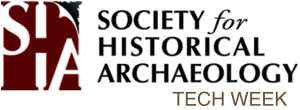The term “public outreach an d engagement” is a popular, credence-lending industry buzzword, but do we know what that actually means in archaeology today? And are we as a profession committed to using these components of our work to their greatest advantage in our field? Unfortunately, the answer to both of these questions, far too often, is: No.
d engagement” is a popular, credence-lending industry buzzword, but do we know what that actually means in archaeology today? And are we as a profession committed to using these components of our work to their greatest advantage in our field? Unfortunately, the answer to both of these questions, far too often, is: No.
Public outreach and engagement in archaeology should be holistic, meaningful and a primary component of our scientific research design—and this includes all projects, from the beginning. Unfortunately, fully integrated public engagement in our collective archaeological work is a rarity. When we do see purposeful engagement, it is often uni-directional, refusing to engage the public in an equal exchange of information. At best, the public is often an “add-on” instead of a meaningfully-planned, integral part of the process.
There are, of course, notable exceptions to learn from in our quest to meaningfully improve our public engagement. One such example is the California Gold Rush shipwreck Frolic, lost along the rugged northern California coast in 1849. Although known to wreck divers, the ship’s association with the history of the area was brought to the public’s attention when Chinese artifacts excavated in a Native American contact site in the coastal range led to the identification of the gold rush shipwreck on the coast. This identification spurred local residents of Mendocino to explore the connection between the Frolic and the founding of their city.
This exploration originated from a diverse set of voices from throughout the community. A complex exhibit of the shipwreck spanned three museums, exploring many community voices and the rise of lumbering in the Redwoods. Research on the ship’s manifest revealed a sizeable cargo of ale, leading a local microbrewery to replicate the drink. Community interest in heritage led to a theater production about the shipwreck’s historical significance, as well as the return of many salvaged artifacts to local museums. And all this in addition to a series of historical books by Thomas Layton, regarding the ship, the cargo, her history, the people, and the places associated with the ship’s career. Years later, the collections and collected stories helped inform the underwater archaeologists who finally studied the submerged remains, and reconstructed the final moments of the fateful voyage.
The defining public engagement variable in this project was the community’s active participation at each stage from the start—from the research design phase all the way through public presentation, including interpretation and implementation of both the outreach and the archaeological investigation. In other words, the “public” was not just an outreach activity. Instead, the public became an active member of the research team that impacted both design and outcomes. The engagement was meaningful because there was a clear role for the public to be an active participant, not just an observer.
We live in an exciting age for archaeology. Technology is changing the very nature of our work, and increasing accessibility to large volumes of knowledge. More crucially, these changes allow us to actively engage the public with far less friction than ever before. It’s time to move beyond measuring public outreach and engagement only in terms of “site visits”: lectures, tours, school visits, streaming video and websites. It’s time to make meaningful engagement—in which the public is a fully contributing member of our research team—a standard for every stage of the process.
The good news is that this trend is changing – share with us your examples of the public as part of the science.
Read the other Tech Week posts, all about public archaeology and underwater archaeology!





I am currently undertaking a voluntary role by bringing experimental archaeology to my daughter’s after school club. As the children will be aged from 5 to 11, I felt that they would benefit from ‘having a go’ at involving themselves with some of the techniques used by archaeologists. I have purchased a microscope, metal detector and fossils and created a timeline for children to see how we locate sites and analyse artefacts.I have included real artefacts from a local site which are all recorded) We will end the 5 week program by creating our own canopic jars and death masks and learn how to locate our own paints from rock, grind to powder and use meaningful script to decorate. This is a basic and rustic approach, but one which I hope will inspire children to think about and hopefully develop later in their lives by making the whole experience fun and functional.